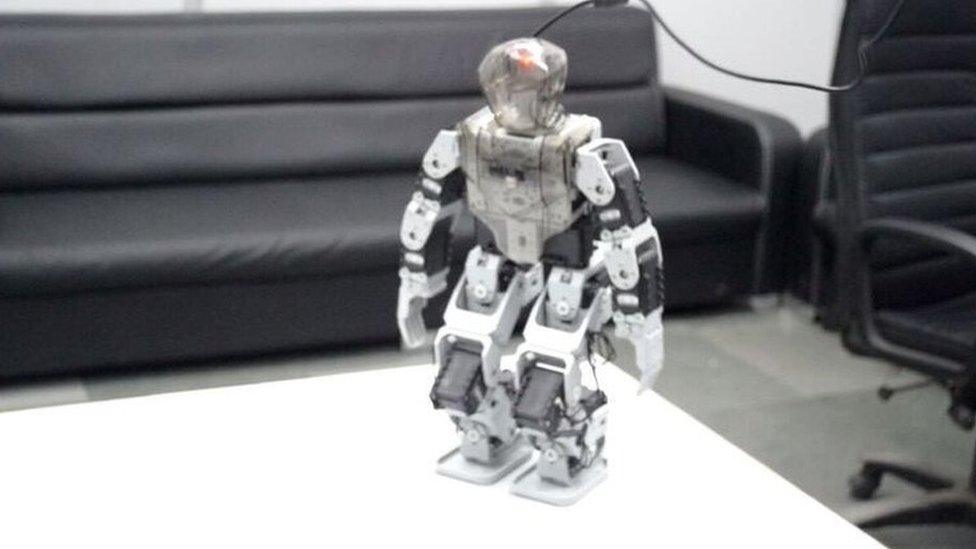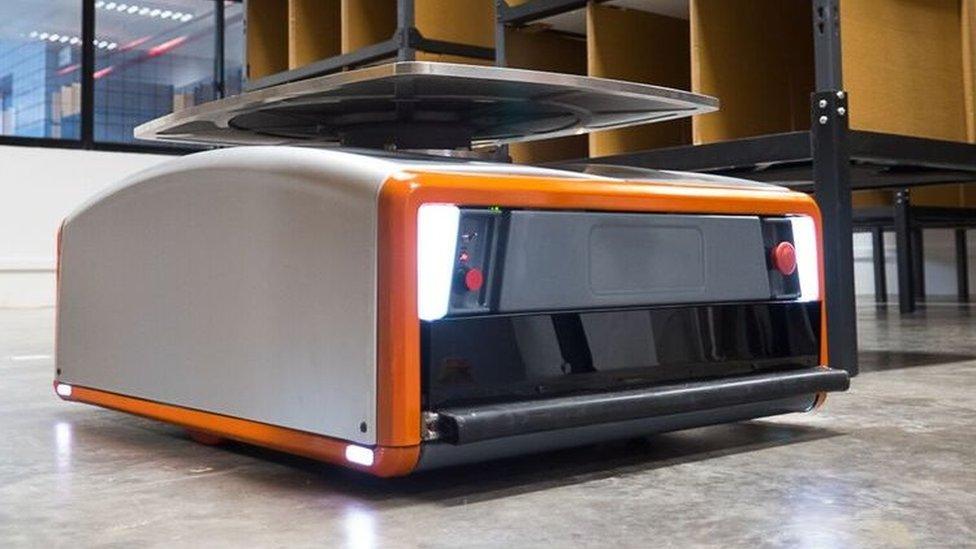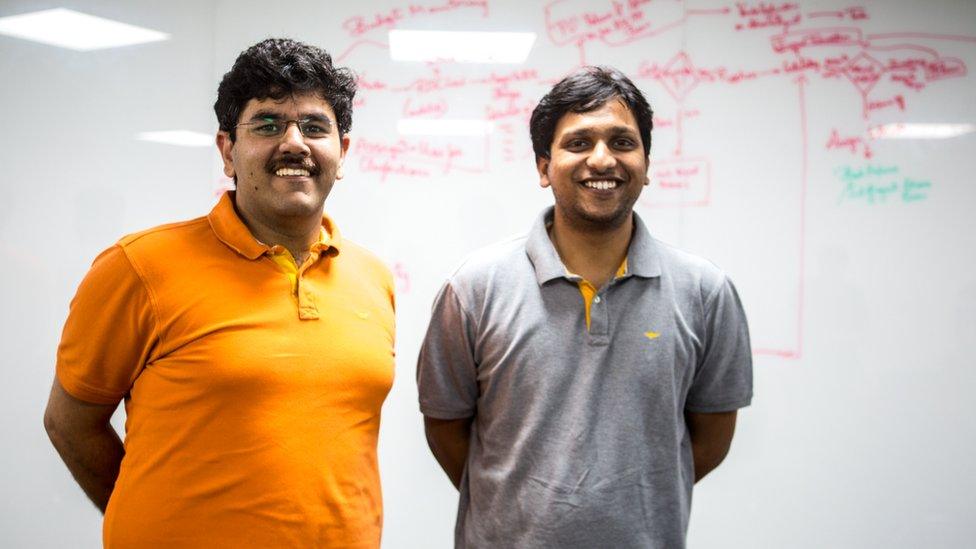'How we built India's biggest robot company'
- Published
How GreyOrange is becoming India's home-grown robotics giant
In 2008, engineering student Samay Kohli wanted to build a humanoid robot, but his professor told him it would not be possible.
Along with his fellow student Akash Gupta, not only did they achieve that task, but they have also built GreyOrange, a multi-national robotics company based in India and operating across Asia.
"We've done some stuff that India was not supposed to do," Mr Kohli told the BBC. "People are not supposed to build hardware, robot products, out of India and we've been able to do that."

Acyut was India's first home-grown humanoid robot and the first robot the team behind GreyOrange built
So how did GreyOrange grow from an engineering classroom to an international robotics player?
Mr Kohli and Mr Gupta proved their teacher wrong, building India's first humanoid robot, which they called Acyut. They then entered their creation in kung fu competitions and international robot football championships.
The team also won several robotic competitions around the world.
But it was a different passion that has seen GreyOrange grow - not for sport, but for online shopping.
New consumers

India's online shopping boom is driving massive international investment in the country's e-commerce sector
The e-commerce sector in India has seen unprecedented growth in the last few years.
Roughly 350 million Indian citizens are online and according to international payment company Worldpay, that will nearly double by 2020, when they will spend $63.7bn (£51.8bn) online.
Despite companies often making a loss as they offer deeper and deeper discounts to attract customers, investors have flooded into the sector. More than $5bn (£4bn) of private investment was ploughed into the sector in 2015, according to global consultancy PwC.
Amazon recently announced it would invest an additional $3bn in India, on top of the $2bn it announced in 2014.
While online retailing is only a part of e-commerce, it is the area that many see as the one with the biggest growth potential.
Those retailers servicing millions of consumers will need to keep their goods in warehouses, and those warehouses need to be efficient. That's where GreyOrange has positioned itself.
In India, GreyOrange says it has 90% of the warehouse automation market and it has worked with leading e-commerce and logistics firms in the country.
They also run eight offices in five countries and employ more than 650 people.
Butler does it

GreyOrange claims AI robot Butler can make a warehouse up to five times more efficient
"Warehouses are everywhere and they are supposed to become more and more intelligent as consumer demand increases.'' says Mr Kohli.
GreyOrange has two different robots to help warehouses become more productive.
Butler, an artificial intelligence-powered robotic system, helps pick products from shelves in the warehouse.
''A single person would pick about 100 to 120 items in one hour. With our Butler robot, he is able to pick 400 to 500 items every hour." Mr Kohli says.
The second robot, Sorter, automates the sorting of outgoing packages in a distribution centre.
They say that the robots they already have installed can potentially sort three million packages every day.
Trillion-dollar opportunity

Samay Kohli (left) and Akash Gupta are the founders of GreyOrange
One of the biggest challenges to the company's success has been sourcing parts.
''India does not have a very strong hardware ecosystem." explains Paula Mariwala, who invests in technology based start-ups for SeedFund.
"So to source the right products and to get manufacturing going at a large scale in the early stages is particularly difficult. You would not be able to try out different components to have different versions of the product very easily - your time cycles will be longer. ''
The size of the potential prize is what has helped the founders overcome these problems.
''We were looking at how robots are going to be the next revolution that is coming right, the next decade is going to be all about making humans more efficient by using robots more and that's essentially how we got started.'' Mr Kohli says.
''Robots are needed to work with humans and not to replace them. Humans will always be there in the workplace, but robots make a very important part of the ecosystem they work with.
"Ten years ago, every person did not have a computer, today every person has one computer. We look at robots in that sense: as everyone has one computer, in the future they will have one robot with them to help them do their work better.
"It's a trillion-dollar opportunity, that's the space we're fighting in. ''